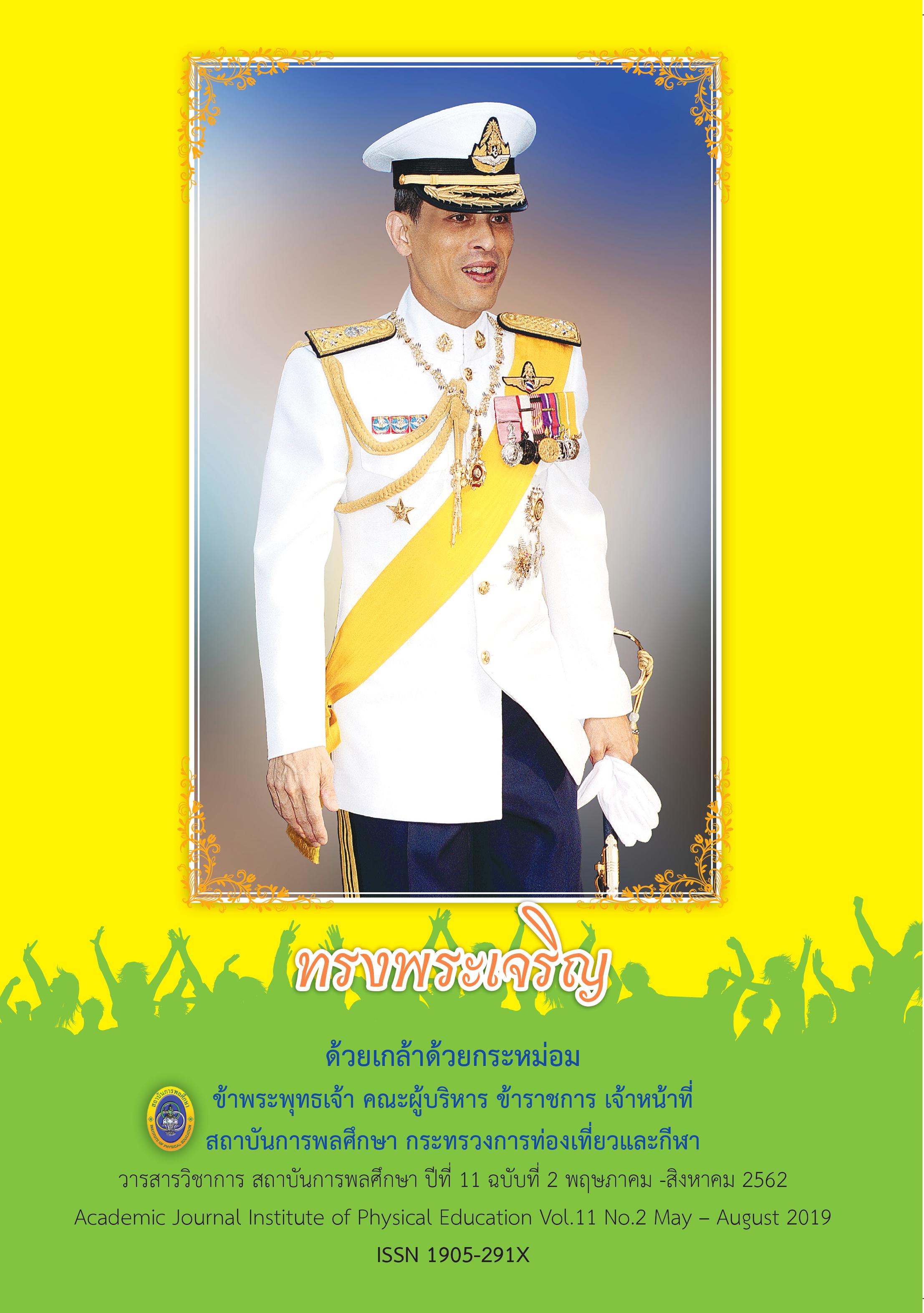RISK REDUCTION MANAGEMENT MODEL OF SCUBA DIVING IN THAILAND
Main Article Content
Abstract
The objective of this research was to create a risk reduction management model of diving activities in Thailand. This research was conducted by Delphi technique. The samples of the research consisted of 17 diving experts. Statistics were percentage, median, mode, and interquartile ranges.
The results showed as the following five aspects:
1. Diving instructors had to have the requirements of a diving.
2. Divers had to undergo primary diving training.
3. Diving equipment had to meet the standards of working condition.
4. Diving instructors had to know Geographical environment of the diving site for the best decisions.
5. Dangers in diving included chemicals, dangerous animals, plants and the wrong way of diving.
Suggestions for the implementation of the research findings were: 1) To establish a Responsible agency should be established, 2)Training sessions for participants in diving activities should be organized, 3) Legislative guidelines to the entrepreneurs should be setup, 4) The authority should make divers adhere to the strict regulations of diving
Article Details
The published article is a copyright of the Academic Journal of Thailand National Sports University. The passage appeared in each article in this academic journal is a perspective of each author which is not related to the journal. Each author is required to be responsible for all components of his/her own article. If there are any mistakes, each author must be responsible for those mistakes on his/her own.
References
Marine Department. (2014). Water safety Data. Retrieved January 30, 2014. From www.md.go.th/interest/cpest. [in thai]
Janate Manynark and others. (2005). Reduce Risk Management oganization to practical. Bangkok: Final. [in thai]
Jetsda Jetsdawan. (2013). Reduce Risk Management. Retrieved February 21, 2013. From http.//www.audit.rtaf.th/data
Pemika Telapirat. (2006). Scuba: water Tourism. Bangkok: Srinakarinwirot University.
Web Sawatdee Company limited. (2017). Water Activities. Retrieved March 18, 2017 from www.sawatdee.com.
Plawarn. (1990). Scuba Manual. Bangkok : Peerungrot Printing.
Pemika Telapirat. (2006). Scuba: Water Tourisim. Bangkok. Srinakarinwirot University.
Scuba Scool International. (2006). Openwater Scuba Diver. Bangkok. Conceptsistem Ink.
Brown, C. (2005). Sustainable Enterprise. London: Kogan.
Caras R. (1978). Venomous animals of the world. Prentice-Hall, Englewood Cliffs, NJ,.
Clifford Rossi. (2014). A Risk Professional s Survival Guide: Applied Best Practices in Risk Management. New York: Manhattan.
Don M. Chance and Robert Brook. (2015). Introduction to Derivatives and Risk Management (with Stock-Trak Coupon). New York.
Garrett, H.E.& Woodworth, R.S. (1969). Statistics in Psychology and Edocation. Bombay: Vakils, Feller&Simons Prt. LTD.
Glass and Julian. (1970). Statistical Methords in education and Psychology. New York: Prentice-Hall.
Ian M, Banks. (2008). RISK. Retrieved December 9, 2008. From http://www.free.definition.com./risk.htm.
Kinicki, Angelo & Willaim, Brain K. (2006). Management. A Practical Introduction. 2th ed. New York: Me Graw-Hill Company.
NAUI. (2004). Risk Management Handbook. The National Association of Underwater Instructors Spring News Corporation Co., Ltd. (2015). Sport. Retrived January 7, 2015. From http://www.springnews.co.th/category/sport/domestic.


